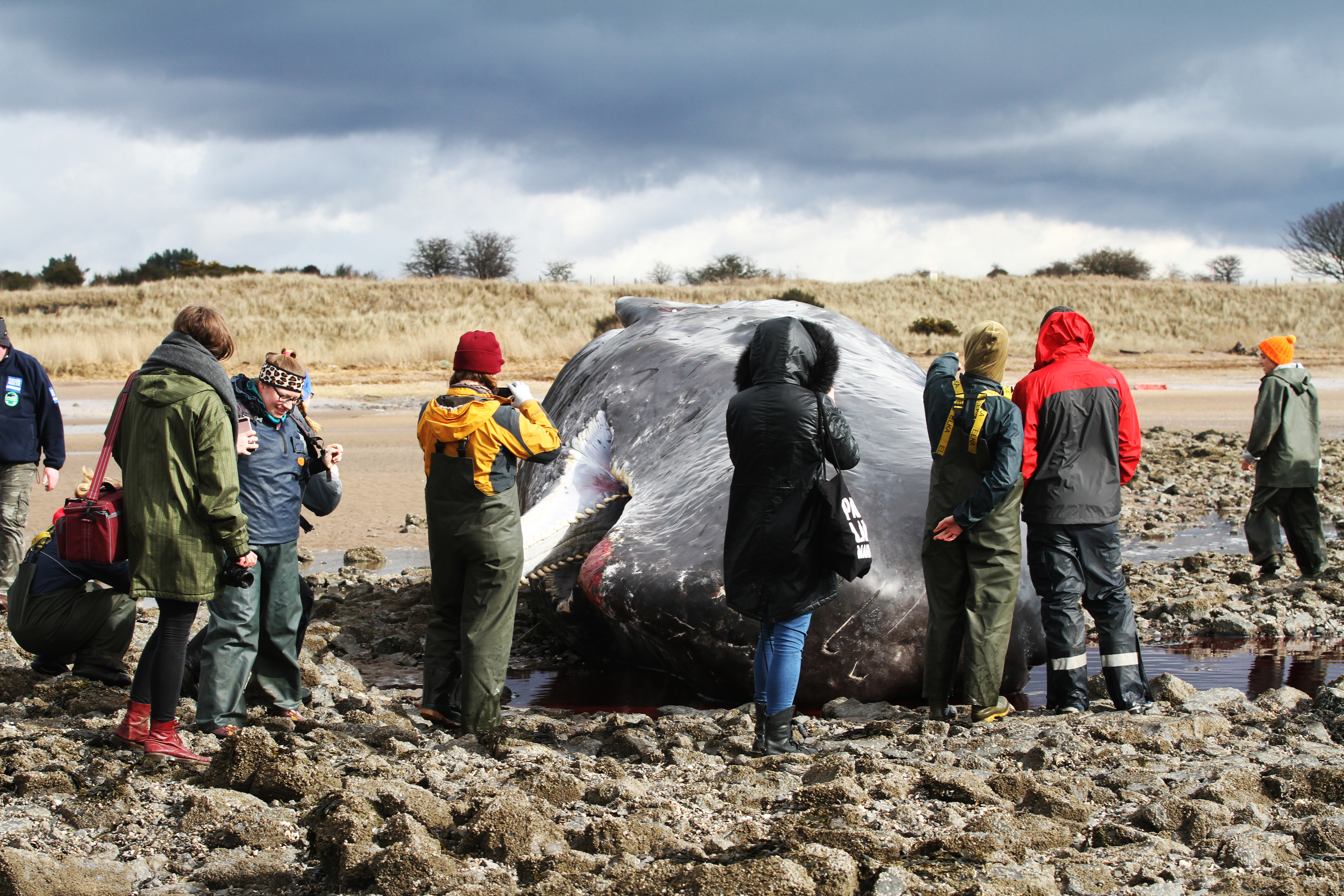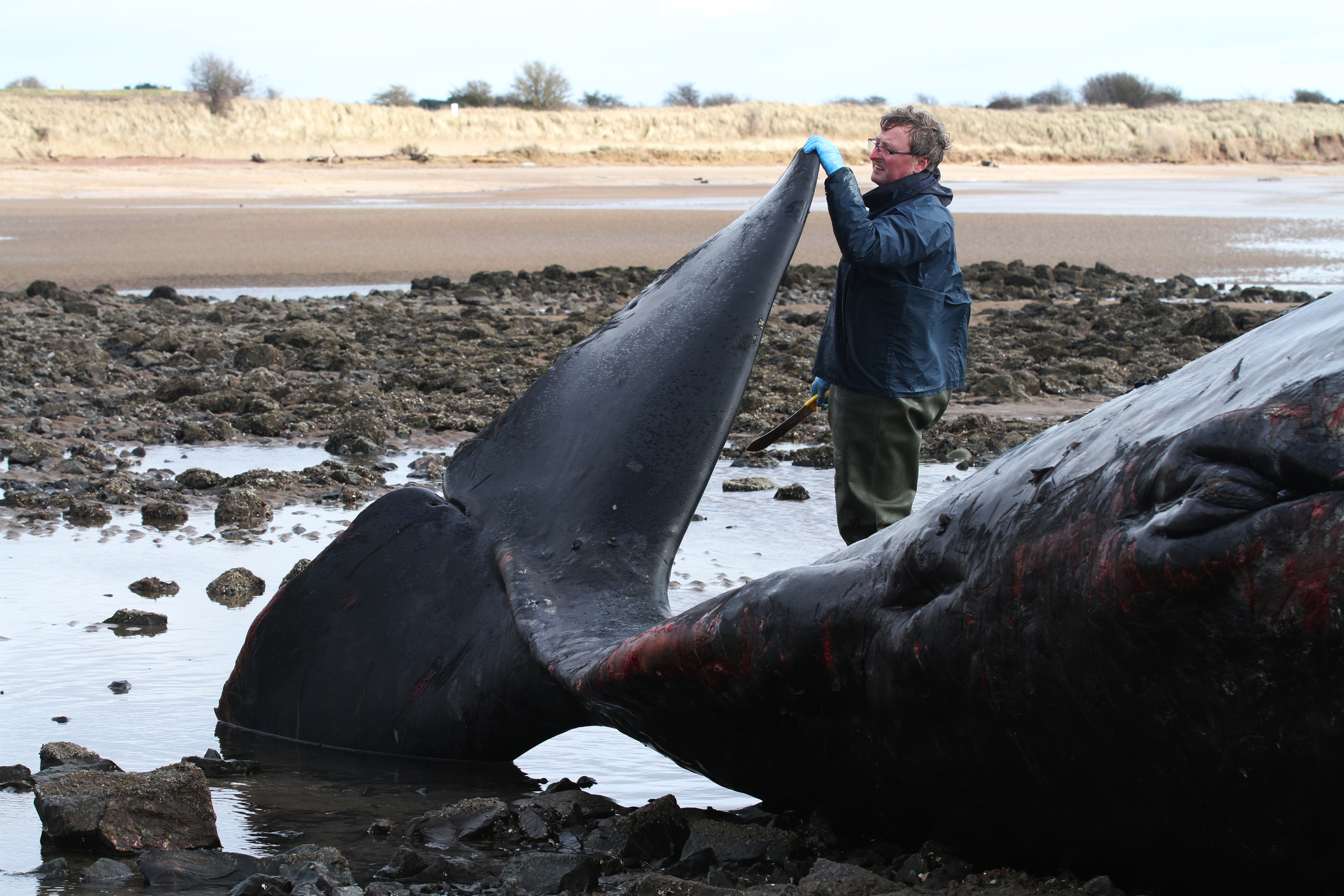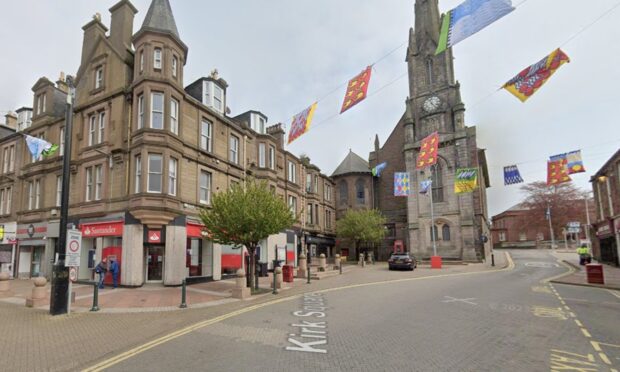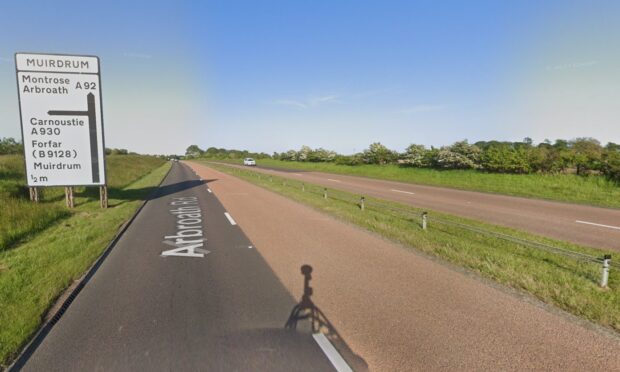A probe into the death of a massive sperm whale which washed up near Monifieth on Wednesday is under way.
Dr Andrew Brownlow, head of the Scottish Marine Animal Stranding Scheme (SMASS), began a post-mortem on the 45ft sea creature at the beach on Barry Buddon firing range on Friday.
After taking samples from the whale with the help of staff and students from the Sea Mammal Research Unit and fellow marine rescuers, he will investigate its organs and attempt to discover the cause of death.
Dr Brownlow will look for signs of disease and contaminants in the mammal’s body. There are also signs that it may have sustained injuries in a fight with another male sperm whale.
There is no evidence of “human interaction” such as a marine entanglement or a ship strike.
Dr Brownlow explained to The Courier that the most likely theory is the sperm whale went off course while travelling from Norway or the north of Scotland down to equatorial waters.
He said: “What I suspect happened – we’re basing this on what we’ve learnt from other sperm whales that have come into this area.
“Male sperm whales tend to feed north of Scotland off the coast of Norway. They naturally eat sort of fish but particularly squid.
“What we think happens is that when they are coming back south to go back down to more equatorial waters for breeding season, they don’t turn right basically but they end up in the North Sea rather than going down The Minch or the Atlantic.
“The North Sea from here is not a good environment for a sperm whale. It is quite shallow. That makes it difficult for them to navigate.
“But what we think happens is that they come into these firths on the east coast of Scotland because there is a theory that they can navigate or can navigate in part by using the earth’s magnetic lines.
“Then what happens is they try to get back to the Atlantic by going west using these lines as a sort of navigation. And unfortunately they don’t realise that Scotland is in the way.”
For more information, watch the full interview in the video above or click here.











